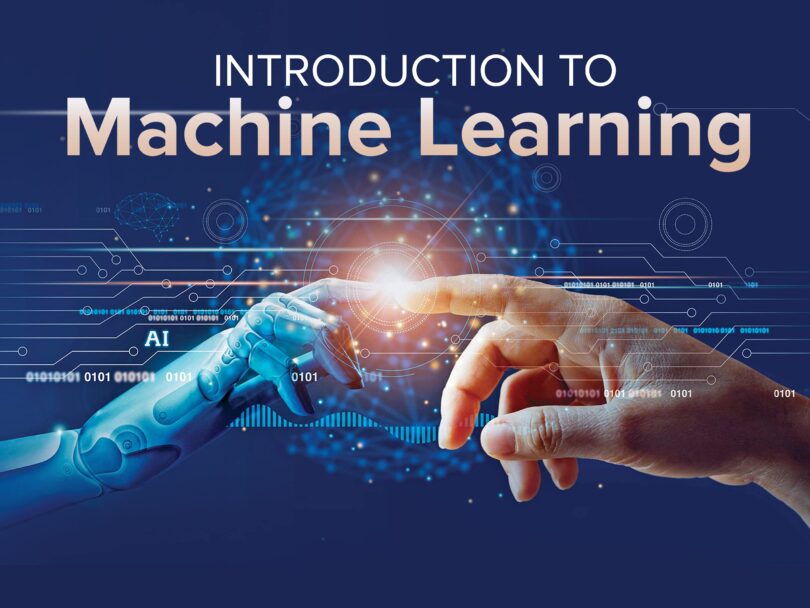Introduction to Machine Learning 2023: PDF Download. Are you looking to learn more about the key concepts and algorithms in machine learning? Check out this monograph, which provides a concise yet comprehensive introduction to the field.
Table of Contents
With a focus on probabilistic models for supervised and unsupervised learning, this resource offers a unified notation and mathematical framework for building on first principles and exploring more advanced topics.
Introduction to Machine Learning 2023: PDF Download
Whether you’re an engineer with a probability and linear algebra background or simply interested in learning more about machine learning, this monograph is a great starting point.
A Brief Introduction to Machine Learning for Engineers.
Machine Learning (ML) is a branch of artificial intelligence (AI) that enables computers to learn from data without being explicitly programmed. Engineers can use ML to create intelligent systems that can recognize patterns in data, make predictions, and learn from new information.
The three main types of ML
The three main types of ML are supervised learning, unsupervised learning, and reinforcement learning. In supervised learning, the computer is trained on labeled data, where the desired output is known, and the algorithm learns to map inputs to outputs. In unsupervised learning, the computer is trained on unlabeled data and must find patterns or structure in the data without any guidance.
Supervised learning
Supervised learning is a type of machine learning where the computer is trained on labeled data, where the desired output is known. The algorithm learns to map inputs to outputs, by minimizing the difference between the predicted and actual outputs.

The goal of supervised learning is to build a model that can accurately predict the output for new, unseen inputs. It is commonly used in applications such as image and speech recognition, natural language processing, and prediction tasks.
RELATED: Introduction to OpenAI
Some examples of supervised learning algorithms include linear regression, logistic regression, decision trees, and neural networks.
Unsupervised learning
Unsupervised learning is a type of machine learning where the computer is trained on unlabeled data and must find patterns or structure in the data without any guidance. The algorithm learns to identify hidden relationships and groupings in the data, by clustering or dimensionality reduction techniques.

The goal of unsupervised learning is to discover new insights and knowledge from the data, without having any preconceived notions of what the output should be. It is commonly used in applications such as anomaly detection, recommendation systems, and data visualization.
RELATED: 5 Social Media Services That Can be enhanced with AI
Some examples of unsupervised learning algorithms include k-means clustering, hierarchical clustering, principal component analysis (PCA), and autoencoders.
Reinforcement learning
Reinforcement learning is a type of machine learning where the computer learns by trial and error, receiving feedback in the form of rewards or penalties for its actions. The algorithm learns to make a sequence of decisions that maximize a cumulative reward over time, by exploring the environment and learning from its experiences.

The goal of reinforcement learning is to find an optimal policy that maximizes the long-term reward. It is commonly used in applications such as game playing, robotics, and recommendation systems. Some examples of reinforcement learning algorithms include Q-learning, policy gradient methods, and actor-critic methods.
RELATED: ChatGPT – Selling content generation with A.I 2023
ML is used in a wide range of applications, including image and speech recognition, natural language processing, recommendation systems, fraud detection, and autonomous vehicles. Engineers can use ML to build models that can analyze large datasets, detect anomalies, and predict outcomes.
RELATED: Father Paolo Benanti – Finding the heart and soul of AI
To use ML, engineers need to have a solid understanding of statistics, programming, and data analysis. They must also be familiar with ML algorithms and techniques, such as linear regression, logistic regression, decision trees, and neural networks. Tools and frameworks such as Python, TensorFlow, and Scikit-learn are commonly used in ML development.
Download PDF: Introduction to Machine Learning 2023
In summary, ML is a powerful tool that engineers can use to create intelligent systems that can learn from data and make predictions. By leveraging ML algorithms and techniques, engineers can build models that can analyze complex datasets and provide insights that can inform decision-making.
Here is where we share source of knowledge (Life Hacks & Life Style ), Entertainment, Technology, Fashion, E-News and updates all over the world.
Keep on visit our website for more updates

